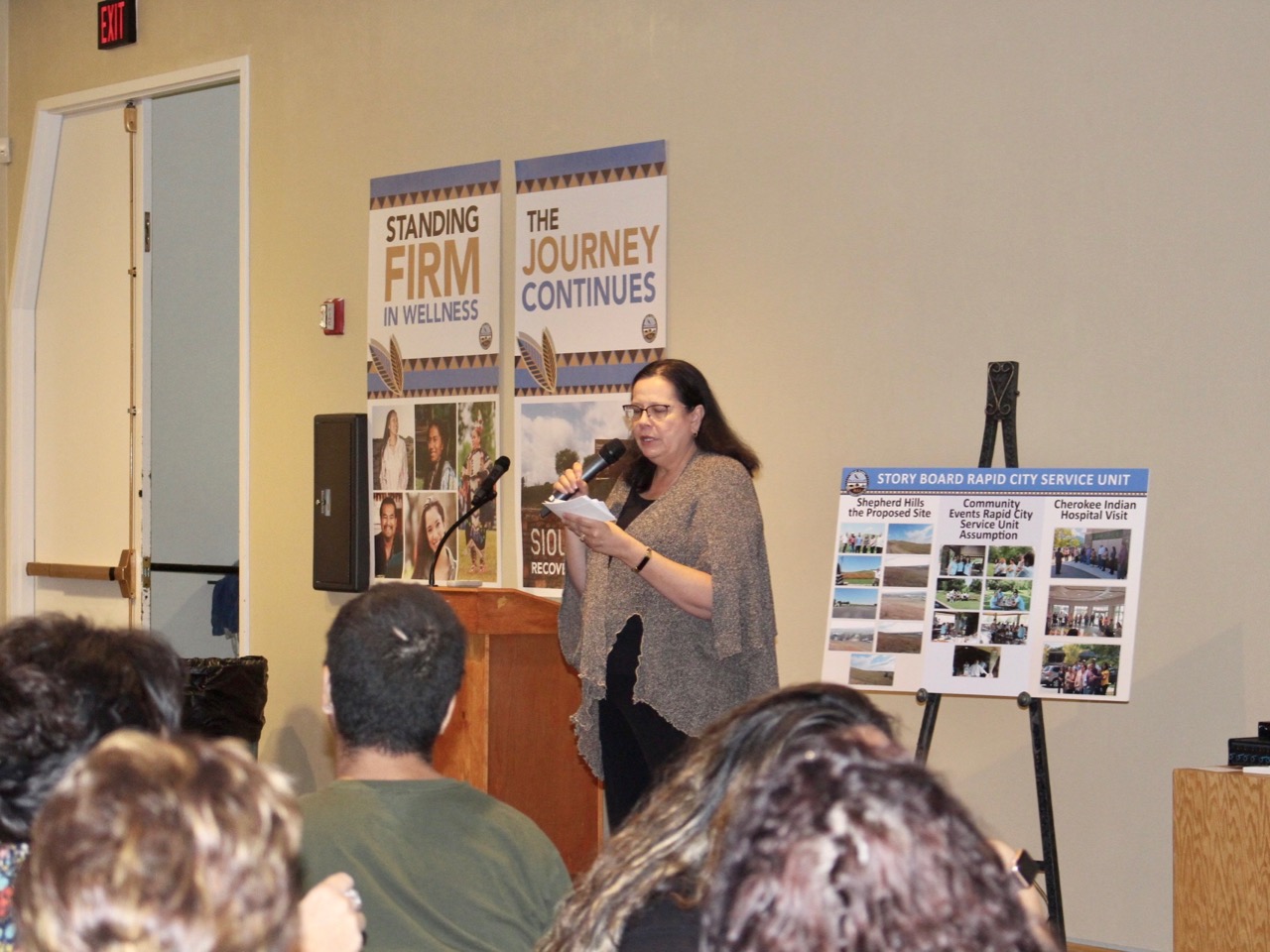Is Sioux San move a done deal?
By Ernestine Chasing Hawk
Native Sun News Today Staff Writer
nativesunnews.today
RAPID CITY – The future of Sioux San Hospital, one of the oldest buildings in Rapid City and the nucleus of the Rapid City Indian Community, is at stake.
A proposal to build a new facility on land donated by local developer Hani Shafei on the northeast side of Rapid City and operated by the Great Plains Tribal Chairmen’s Health Board via a 638 contract under the Indian Self Determination Act has many Indian community members asking questions.
To answer questions that still remain over the future of Sioux San Hospital, CEO of the Great Plains Tribal Chairmen’s Health Board Jerilyn Church gave a comprehensive presentation last Wednesday evening at the Journey Museum.
Church introduced the Advisory Committee made up of tribal leaders and community members who Church said, “Have really put a lot of their heart and their energy and their vision into this process.”
Advisory Committee members present were; Eric Brings White, Rapid City Community member, Dana Leader Charge, Rosebud Sioux Tribe, Randy Ross, Rapid City Community Member, Richard Boyd, Rapid City Community member, Jackie Sears, Oglala Sioux Tribe, Richard Greenwald, Oglala Sioux Tribe and Ryman Lebeau, Cheyenne River Sioux Tribe. Advisory Committee members not present were William Bear Shield, Rosebud Sioux Tribe and Robert Chasing Hawk, Cheyenne River Sioux Tribe.
“We would like to have answered your questions from day one but that was impossible,” Boyd said. “IHS has been slowing us down and have done everything they can to slow us down.”
Church spoke about the 2012 formation of the Unified Health Board, made up of members of Cheyenne River, Rosebud and Pine Ridge reservations, which she said has statutory authority over Sioux San. The Unified Health Board became the sounding board for the Rapid City Indian community. She said after members of the health board approached the Great Plains Tribal Chairmen’s Health Board, her organization got involved.
 Three Sioux tribes plan to take over management of the Sioux San
Hospital, an Indian Health Service facility, by moving it to a new location in Rapid City, South Dakota. Photo by
Kevin Abourezk
Three Sioux tribes plan to take over management of the Sioux San
Hospital, an Indian Health Service facility, by moving it to a new location in Rapid City, South Dakota. Photo by
Kevin Abourezk
Indian Health Service in recent years has closed several emergency rooms including the one at the Rapid City Service Unit after an inspection from the Centers for Medicare & Medicaid Services (CMS) who declared Sioux San was in immediate jeopardy. Earlier IHS had closed the inpatient ward on the second floor and now the Rapid City Indian Health Service Unit operates as an outpatient clinic. Health services not covered by Sioux San are contracted out to other facilities through what is termed purchased referred care. However many patients found that payment for outsourced services were not being paid and many ended up with large bills they were unable to pay.
“Seventy five percent of the services were referred to other facilities,” Church said and through GPTCHB involvement much of those monies can be recouped.
Church spoke about the GPTCHB’s and the Unified Health Boards commitment to the project and said they sent out invitations for Rapid City Indian community involvement.
She spoke extensively about the land at Sioux San and said it is not in held in trust by tribes and is owned by Indian Health Service. She said only the land where the graves of children who died while attending the Rapid City Indian School and patients who died at Sioux Sanatorium is held in trust.
She said the fear is that if IHS builds on the land and gravesites are found, NAGPRA would apply and the project could be halted, although IHS has told them there are no graves on the proposed building site.
Many community members have also voiced their concern about property taxes and Church explained that if the land is held in fee, South Dakota law exempts land used for health care services.
Hani Shafei has donated 20 acres and an additional 20 acres is available for expansion she said and building on virgin property will be more cost effective than repurposing the land at Sioux San where only 17 acres are usable.
She said the existing buildings at Sioux San can be used for mental health and addiction recovery services and that as long as the land is used for health care service, it will remain for use by the Indian community.
Contact Ernestine Chasing Hawk at staffwriter@nativesunnews.today
Copyright permission Native Sun News Today
Join the Conversation



